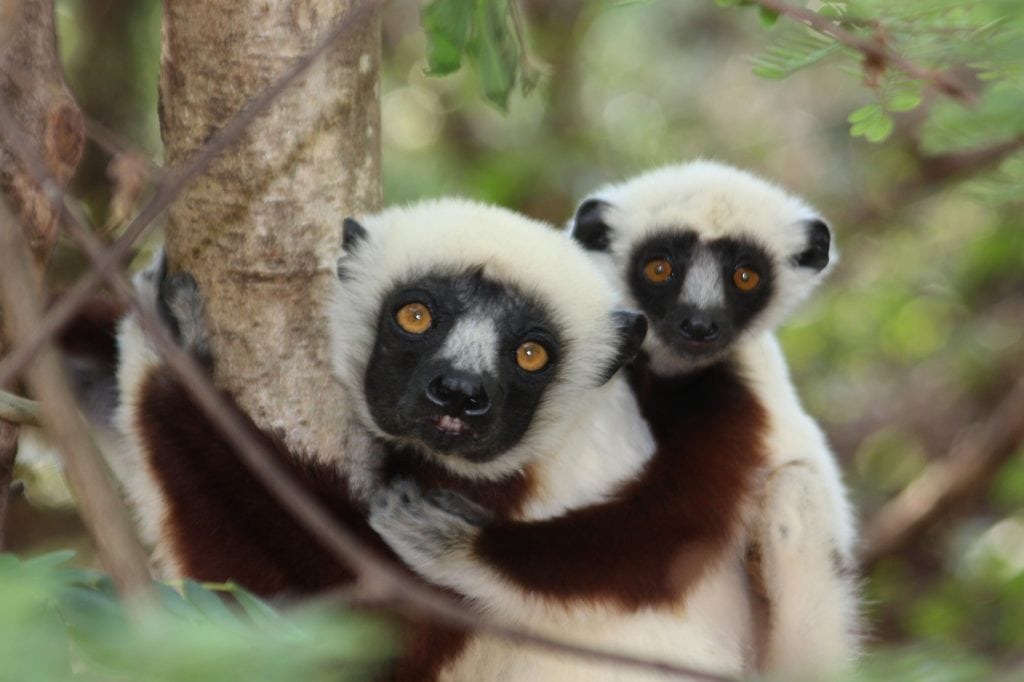Leaves make up most of this sifaka’s diet, though they also eat flowers, fruit, bark, and dead wood. Coquerel’s sifakas begin their daily activities near sunrise.
They often soak up the morning sun, basking in the treetops with their arms stretched out before heading to find food. Small groups of males, females, and young move slowly through the trees in search of food. They may travel up to a mile before the end of their daily trek, which generally occurs before sunset.

Life in the trees protects sifaka groups from the few predators that share their forest homes. Loud piercing alarm calls warn of danger. All members of a group may simultaneously produce the explosive, nasal, hiss-like call “Shi-fakh, shi-fakh, shi-fakh.” This distinctive call, made by all sifaka species, is what gives the lemur group its name.
Sifakas live in small, social groups of males and females numbering 3 to 10 individuals of varying ages. Aside from mothers and their offspring, group members are not necessarily related to one another. Members sleep and forage together; they even share territory with other nearby groups.















